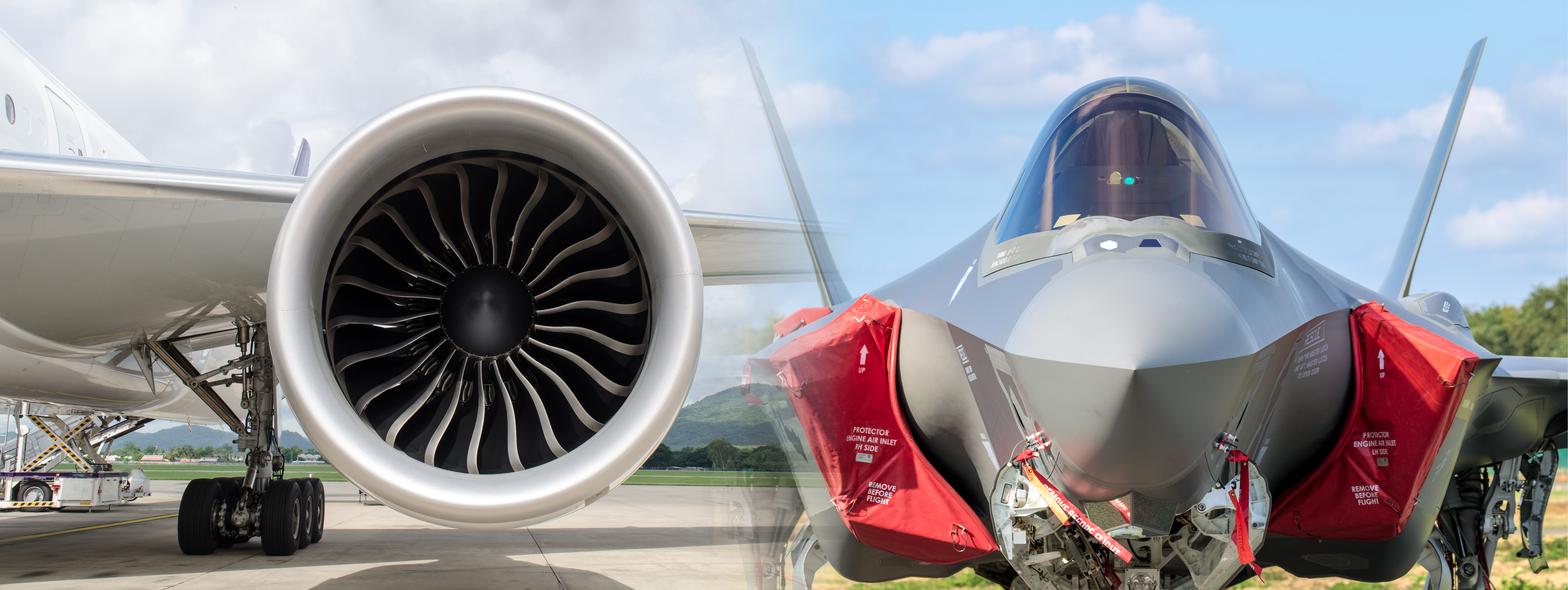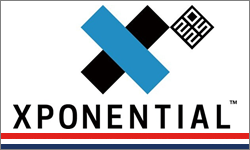Aerospace & Defense Exporter Alert, Apr. 2025
April 2025
Welcome to the Aerospace & Defense Exporter Alert brought to you by the U.S. Department of Commerce’s, Industry & Analysis-Aerospace Office and U.S. Commercial Service.
Each edition highlights an important aerospace and defense market, industry policy and our signature events. We also include tools to export such as export statistics, market research, trade events and U.S. government advocacy.
Our mission is to increase U.S. exports, enhance job creation, strengthen national security, promote and protect U.S. commercial interests abroad, and deliver customized solutions to ensure that U.S. businesses compete and win in the global marketplace. Contact us to find your local International Trade Specialist.
Market of the Month – Germany
The German aerospace and defense sector offers plenty of opportunities for U.S. companies. The best way of getting exposure to the German market is by participating in trade shows. Germany is home to some of the major European aerospace trade shows. These shows are ideal platforms for liaising with potential partners and buyers from Germany and multiple other European markets. Entering the German market is a long game, however. Beyond the trade show participation, cooperating with local firms is a preferred way for U.S. companies when bidding on major contracts.
Aerospace & Defense
Let’s take a look at the market figures. Germany has the third-largest aerospace and defense market in Europe, with 2023 revenues at EUR 46 billion or USD 49.7 billion, following the UK at GBP 88.4 billion or USD 109.9 billion (including land defense systems) and France at EUR 70.2 billion or USD 75.9 billion. The figures for 2024 will be published by the German Aerospace Industries Association in May 2025. They were not available at the time of this writing. Some three quarters or USD 33.3 billion of the German production are exported. Regarding the overall development, BDLI president Dr. Schöllhorn stated the following: “Industry figures for 2023 feature both pros and cons. We are delighted that our industry has overcome the COVID years. We also see further growth in both civil aircraft construction and the defense sector. However, there are significant issues related to supply chain reliability and capacity. Increasing regulatory requirements, such as complex national and European supply chain laws, place additional burdens on companies. And we need reliability and predictability in the growth of the defense budget. Uncertainty in procurement decisions is already threatening manufacturing capacity and know-how, especially at SMEs. Finally, we are at risk of being left behind internationally in the space sector if European countries/companies/players do not join forces more decisively and recognize and defend the strategic dimension of independent access to space and its use.” These comments highlight some of the challenges that the German aerospace industry is facing. Overall, it is in healthy condition though. The major industry players (Airbus Defence and Space, Airbus Helicopters, Airbus Aerostructures, Diehl, Hensoldt, IABG, Liebherr, MBDA, and others) have taken the right steps to shape the industry trends until 2040. The 2023 revenues were distributed as follows:
- Civil aviation, EUR 33 billion or USD 37.5 billion vs. EUR 28 billion in 2022
- Military aviation, EUR 10 billion or USD 10.8 billion vs. EUR 8.4 billion in 2022
- Space systems, EUR 3 billion or USD 3.2 billion vs. EUR 2.6 billion in 2022.
Strategic Considerations
Let’s also take a look at the strategic considerations of the German government. Aerospace stands out in this aspect. The Federal Ministry of Economic Affairs and Climate Action (BMWK) lists aerospace as a key industry with high growth rates and a strong industrial core in Germany. The “2020 Technology Strategy of the German Aerospace Industry” builds on BMWK’s earlier “Aerospace Strategy”, underlining the particular importance of the aerospace sector for Germany as an industrial country both technologically and economically. It was adopted by Germany’s former three-party coalition government (SPD, Greens, FDP) in December 2021. An update is expected once the incoming coalition (CDU/CSU, SPD) has been formed. The coalition talks are currently underway.
Besides aiming at increased competitiveness, the aerospace sector promises to make significant contributions to overarching societal goals, mainly with regards to the aspirational target of achieving less carbon emissions by 2050, developing sustainable aviation fuels (SAFs), reducing the noise footprint, and improving the environmental record of aircraft. Moreover, the BMWK has updated the Aerospace Research Program (LuFo)—a grant program for aerospace research and technology projects—and issued another call for applications in April 2022. The sixth phase of LuFo (LuFo VI) ended in April 2024. LuFo Climate VII-1 was launched on April 19, 2024, marking the start of the seventh phase which includes a total of three funding calls for innovative technology projects in Germany until 2030. The budget for LuFo is earmarked at EUR 300 million per year, making it the central funding program for industry-led civil research and development projects in Germany. Compared to previous funding periods, LuFo VII again places a strong focus on reducing the overall energy demand and the impact of aviation as well as on reducing non-carbon effects.
Regulatory Provisions
U.S. companies should be aware regulatory provisions on the European side, both on the EU and on the national level. The U.S. Commercial Service closely monitors any regulatory changes and supports U.S. companies by conducting frequent and active outreach to the relevant authorities in Germany, such as the Federal Office of Bundeswehr Equipment, Information Technology and In-Service Support (BAAINBw) in Koblenz, Rhineland-Palatinate. We also follow the latest aerospace, defense and security-related policy developments and discussions in Germany. On an international level, we gain insights from organizations like the Aerospace, Security and Defence Industries Association of Europe (ASD) and the Aerospace Industries Association (AIA) to understand their positions on transatlantic trade issues and communicate U.S. objectives.
Opportunities
Opportunities for U.S. aerospace and defense manufacturers with interest in the German market exist in the following segments:
- Commercial aircraft
- Business jets
- Turboprops
- Helicopters
- eVTOLs
- UAVs
- Aerostructures
- Propulsion systems
- Subsystems for aerospace vehicles
- Military aircraft, air defense systems
- Spacecraft and launch systems
- Communications systems
Earlier this decade, the Bundeswehr’s EUR 100 billion (USD 108.2 billion) Bundeswehr special fund promised to be the biggest opportunity across the board. The special fund was announced by then-Chancellor Scholz in February 2022 and approved by the German parliament in June 2022.
It comes on top of record defense budgets of EUR 50.4 billion (USD 55.9 billion) in 2022, EUR 50.1 billion (USD 54.3 billion) in 2023, EUR 52 billion (USD 56.2 billion) in 2024, and EUR 52.25 billion (USD 55 billion) in 2025, and will be spent until 2026, bringing Germany closer to NATO’s 2 percent GDP spending target. The euro-dollar conversions are based on the European Central Bank’s average exchange rates for the respective years. The lion’s share of the special fund is designated for air force procurements, summarized under the term “Dimension Air”, with approximately EUR 33.4 billion (USD 36.2 billion) slated for the procurement of H-47 Chinook heavy transport helicopters, jointly offered by Boeing and Airbus Helicopters, and F-35 Lightning II fighter jets offered by Lockheed Martin. The F-35s will allow Germany to continue in the NATO nuclear deterrence mission without a gap when the Tornados reach the end of their service life in 2030. They are already in service with the UK, the Netherlands, Italy, and others, and thus provide unique potential for cooperation with NATO allies. The German MOD plans to develop a Eurofighter variant to fulfill the electronic warfare role. The Future Combat Air System (FCAS), jointly developed by France, Germany and Spain, will replace the Eurofighter from 2040. The second-largest position, some EUR 20.7 billion (USD 22.4 billion) are earmarked for investments in the “Dimension Command Capability and Digitalization”; followed by EUR 16.6 billion (USD 18 billion) for land defense systems or “Dimension Land”, e.g., the Puma infantry fighting vehicle (IFV); followed by EUR 8.8 billion (USD 9.5 billion) for naval systems or “Dimension Sea”, e.g., K130 corvettes, F126 frigates, and HDW Class 212CD submarines.
In January 2024, the Bonn-based defense publication European Security & Defence (ESD) noted in a well-informed article (The Bundeswehr special fund – a year and a half later) that only a few projects in the special fund are genuinely new while the majority are transfers from Section 14 of the core defense budget. The article highlighted that the armaments investment part of the budget has declined continuously since 2022 and that the special fund is playing an increasingly important role in achieving NATO’s 2 percent GDP spending target. In 2024, some EUR 19.8 billion (USD 21.4 billion) from the special fund were added to the defense budget, bringing the overall defense expenditures to EUR 71.8 billion (USD 77.7 billion). Under the 2025 budget deal that was clinched on July 5, 2024, the German government agreed to keep German defense spending above the NATO 2 percent target, with an additional EUR 30 billion to finance a massive military overhaul. The mid-term financial plan foresees a total of EUR 80 billion in 2028. As of April 2025, Germany considers the possibility of allocating 200 billion euros to bolster its defense capabilities. This could bring the defense spending to over 2 percent of the GDP. The U.S. Commercial Service Germany will observe the development.
Upcoming Events
- 15th Aviation Forum, December 10-11, 2025, Hamburg
https://www.aviation-forum.com/
- Aircraft Interiors Expo, April 14-16, 2026, Hamburg
https://www.aircraftinteriorsexpo.com/
- AERO, April 22-25, 2026, Friedrichshafen
https://www.aero-expo.com/
- ILA Berlin, June 10-14, 2026, Berlin
https://www.ila-berlin.de/en
Meet U.S. Commercial Specialist from the U.S. Embassy in Germany.
Moritz Holst
International Trade Administration
U.S. Department of Commerce
U.S. Consulate General, Munich
Office: +49 (89) 2888-754
Email: moritz.holst@trade.gov
DOD’s Defense Innovation Unit (DIU) opened a solicitation for an AUKUS Maritime Innovation Challenge 2025, focused on Undersea Communications and Autonomy. AUKUS partners are seeking to research and develop innovations to enable the synchronization and teaming of multiple undersea systems. In Stage 1, submissions will be evaluated for their desirability and technical merits. Successful submissions from Stage 1 may be invited by any of the AUKUS partners to submit a detailed proposal as part of Stage 2, according to individual nations’ tendering and contracting processes. The challenge will offer U.S. companies the ability to increase AUKUS contract opportunities and contribute to trilateral cooperation under AUKUS Pillar II, which is focused on fielding strategic capabilities. Interested companies may access the DIU open solicitation here. Initial responses are due by April 28, 2025.
On March 19, 2025, the European Commission published its “Joint White Paper for European Defence Readiness 2030,” encouraging EU member states to accelerate investment in European defense manufacturing and innovation. The paper outlines a plan to increase collaborative procurement within the EU while emphasizing a need for strong Transatlantic partnerships and supply chains. Through this plan, the EU seeks to close critical capability gaps, including seven key areas: air & missile defense; artillery systems; ammunition & missiles; drones & counter-drone systems; military mobility; AI, quantum, cyber, and electronic warfare; and strategic enablers and critical infrastructure protection.
While EU member states are incentivized to develop and procure jointly, the increased demand for defense solutions in Europe may present new opportunities for U.S. exporters, or it may restrict U.S. industry’s ability to bid on European procurements. If you are facing market barriers for your aerospace or defense products in Europe, or you would like more information on defense trade with Europe, please contact Rick Cieri on I&A’s Aerospace & Defense Team.
We engage with events and trade shows to accelerate the global reach of the events. Providing participants the assurance that the U.S. Department of Commerce not only recognizes the event but is also committed to using the event to maximize opportunities for U.S. exporters.
| Xponential 2025Houston, TX XPONENTIAL is a yearly gathering of global leaders and end users in the uncrewed systems and robotics industry. Questions: Christopher Munoz U.S. Commercial Service, Trade Event Partnership Program |
AUSA 2025Washington, D.C. The Army’s most powerful event covers everything you need-all in one place. Questions: Paul Matino U.S. Commercial Service, Trade Event Partnership Program | |
World Defense Show 2025Riyadh, Saudi Arabia The future of defense integration. Questions: Jacqueline Roeder U.S. Commercial Service, Trade Event Menu of Services |
Tools to Win! Trade Shows and Statistics
Our mission is to increase U.S. exports, enhance job creation, strengthen national security, promote and protect U.S. commercial interests abroad, and deliver customized solutions to ensure that U.S. businesses compete and win in the global marketplace. Export assistance is provided to U.S. companies who manufacture goods and/or provide services of at least 51% U.S. content.
We assist companies in the following areas:
— International Trade Counseling,
— Business Matchmaking,
— Market Intelligence,
— Customized Services, and much more.
Contact Us to find your local International Trade Specialist.
Get Industry Updates - Aerospace and Defense
Please direct newsletter questions to Erica Ramirez at Erica.Ramirez@trade.gov.







